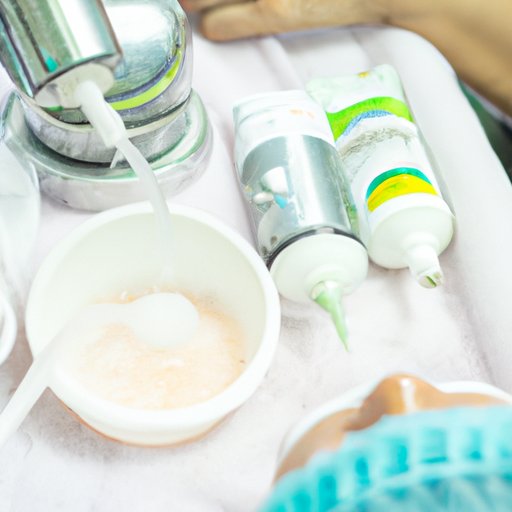
Introduction
Under-eye bags are the puffiness or swelling that occurs beneath the eyes. Although mostly harmless, they can cause a person to look tired, older, and can even cause embarrassment. In this article, we will discuss tips and strategies on how to get rid of under eye bags, using natural remedies and cosmetic procedures that one can try.
Drink More Water
Dehydration is one of the leading causes of under-eye bags. The body’s natural response to dehydration is to hold onto any available water, causing it to be retained under the eyes and creating a swollen appearance. Therefore, it is crucial to stay hydrated to avoid this phenomenon.
The recommended daily water intake is about eight glasses of water. However, this amount may vary depending on age, physical activity, and other factors. One can determine their specific water intake requirements using a hydration calculator.
Some tips for incorporating more water into one’s daily routine include carrying a water bottle at all times, scheduling breaks throughout the day specifically to drink water, or drinking other hydrating beverages like herbal teas.
Get Plenty of Sleep
A lack of sleep can significantly affect the appearance of under-eye bags. When the body is deprived of enough rest, the skin appears pale, and blood vessels under the eyes appear more visible. This gives the appearance of dark circles and puffiness.
To reduce under-eye bags, one can establish a consistent sleep routine. It is recommended to aim for seven to eight hours of restful sleep each night. Additionally, avoid using digital devices before bed and create a relaxing sleep environment free of distractions.
Other tips for improving sleep quality include avoiding caffeine in the evenings, incorporating regular exercise into one’s lifestyle, and keeping a consistent sleep schedule.
Reduce Salt Intake
Excess salt in the diet causes the body to retain water, including around the eyes. This can cause a bloated appearance beneath the eyes and exacerbate under-eye bags. Therefore, it is important to monitor salt intake in one’s diet and make conscious choices to reduce it.
Strategies for reducing salt intake include cooking at home and using fresh ingredients – which allows for better control of the amount of salt used and choosing low-sodium packaged items. When dining out, one can request low-sodium options and avoid adding extra salt. Sample low-sodium meal choices can include grilled chicken, vegetables, brown rice, and fresh fruits.
Use Cold Compresses
Cold compresses work to constrict the blood vessels under the eyes, reducing inflammation and alleviating under-eye bags. The most effective type of cold compress is a chilled cucumber or a cold, damp washcloth. One could also use cool tea bags.
When applying cold compresses, place them on the eyes for about 10-15 minutes, two to three times per day. Tilt the head back while applying the compresses for the best results.
Use Eye Creams
Eye creams are specially formulated to target the delicate skin beneath the eyes, reducing puffiness and dark circles. Look for creams that contain caffeine, hyaluronic acid, or vitamin C, as these ingredients help to reduce inflammation and stimulate collagen production.
When using an eye cream, apply it gently to the under-eye area using your ring finger in a gentle patting motion. Avoid using too much pressure or rubbing the area as this may make under-eye bags more visible.
Facial Exercises
Facial exercises help improve circulation and tone the muscles around the eyes. This can lead to a reduction in the appearance of under-eye bags.
Examples of simple facial exercises include gently massaging around the eyes with the ring finger, doing a self-administered lymphatic massage, or practicing facial yoga. It is important to take precautions to avoid injury, such as using gentle pressure and stopping if there is any pain or discomfort.
Consider Cosmetic Procedures
If natural remedies do not work, one can consider cosmetic procedures. Botox injections and fillers can reduce the appearance of wrinkles and under-eye bags. Laser therapy or chemical peels can help tighten the skin. Surgical options like blepharoplasty can remove excess skin and fat permanently.
It is essential to consult with a qualified medical professional before undergoing any cosmetic procedures. Ensure that the medical professional has experience with the specific treatment and holds the necessary certifications and training.
Conclusion
Under-eye bags can occur for various reasons, from dehydration to aging. Natural remedies, like drinking water, getting enough sleep, and reducing salt intake, can help reduce their appearance. Additionally, cold compresses, eye creams, facial exercises, and cosmetic procedures are effective methods to treat under-eye bags. It is essential to experiment with different remedies and procedures, finding what works for each individual’s unique situation. If unsure, seeking professional guidance is always recommended.




